Analysis of Electromagnetic Interference for Anti-Medal UHF RFID Temperature Tag in High Power Electronic Equipment
Abstract
:1. Introduction
2. RFID Temperature Measurement Tags with Metal-Resistant Design
2.1. The Metal Effect of RFID Temperature Measurement Tags
2.2. Design of RFID Anti-Metal Tag
2.3. Simulation Analysis of RFID Anti-Metal Tag
3. Simulation Analysis of Electromagnetic Interference of High Power Rectifier Heatsink
3.1. High Power Rectifier Power Supply Heatsink
3.2. Electromagnetic Interference Simulation Modeling
3.3. Conducted Electromagnetic Interference Simulation Analysis
3.4. Simulation Analysis of Radiated Electromagnetic Interference
4. Perturbation Analysis of Electromagnetic Interference of RFID Temperature Tag
4.1. Simulation Modeling of Electromagnetic Disturbance of RFID Temperature Tag
4.2. Simulation Analysis of RFID Temperature Tag Subject to Conducted Interference
4.3. Simulation Analysis of RFID Temperature Tag Subject to Radiation Interference
5. Conclusions
- (1)
- The designed common RFID anti-metal temperature measurement tag antenna based on a short-circuit shortcut structure has good anti-metal performance, as verified through simulations.
- (2)
- The established simulation model of electromagnetic interference of high-power rectifier power heatsinks shows that high-power rectifier power heatsinks will generate significant conductive electromagnetic interference and minor radiative electromagnetic interference.
- (3)
- Based on the electromagnetic interference simulation model, an electromagnetic interference simulation model of the RFID temperature tag is established and its electromagnetic interference characteristics are simulated and analyzed.
Author Contributions
Funding
Conflicts of Interest
References
- Fujisaki, K. Evaluation of 13.56 MHz RFID system performance considering communication distance between reader and tag. J. High Speed Netw. 2019, 25, 61–71. [Google Scholar] [CrossRef]
- Inserra, D.; Wen, G. Low profile metal tolerant UHF RFID tag with lumped elements for post-manufacturing frequency tuning. IEEE Trans. Antennas Propag. 2021, 69, 7953–7958. [Google Scholar] [CrossRef]
- Abdulhadi, A.E.; Mandev, S.; Abhari, R. Signal integrity and EMI evaluations of an RFID-Sensor tag for internet-of-things applications. In Proceedings of the 2015 IEEE Symposium on Electromagnetic Compatibility and Signal Integrity, Santa Clara, CA, USA, 15–21 March 2015; pp. 128–132. [Google Scholar]
- Zhang, G.; Dai, Y.; Zhang, X.; Lv, Y.J. Adaptive impedance matching system for downlink of passive semi-ultra wideband ultra-high frequency radio frequency identification tag. Int. J. Adapt. Control. Signal Process. 2012, 26, 530–540. [Google Scholar] [CrossRef]
- Wang, X.; Zhang, J.; Yu, Z.; Mao, S.; Periaswamy, S.C.; Patton, J. On remote temperature sensing using commercial UHF RFID tags. IEEE Internet Things J. 2019, 6, 10715–10727. [Google Scholar] [CrossRef]
- Wang, L.; Xing, H.; Qian, X.; Kwong, J.C.T.; Oppus, C.M. Temperature Sensing and Detecting Technology of Distribution Equipment Based on RFID. In Proceedings of the 2020 5th International Conference on Control and Robotics Engineering (ICCRE), Osaka, Japan, 24–26 April 2020; pp. 130–134. [Google Scholar]
- Zhang, Y.; Liu, F.; Pang, H.; Li, X.; Liu, Z.; He, Y. A RFID-based temperature measurement system for smart substation. In Proceedings of the 2018 International Conference on Electronics and Electrical Engineering Technology, Tianjin, China, 19–21 September 2018; pp. 57–61. [Google Scholar]
- Chen, Z.; Deng, F.; He, Y.; Liang, Z.; Fu, Z.; Zhang, C. A self-powered RFID sensor tag for long-term temperature monitoring in substation. J. Electr. Eng. Technol. 2018, 13, 501–512. [Google Scholar]
- Wang, B.; Law, M.K.; Yi, J.; Tsui, C.Y.; Bermak, A. A −12.3 dBm UHF passive RFID sense tag for grid thermal monitoring. IEEE Trans. Ind. Electron. 2019, 66, 8811–8820. [Google Scholar] [CrossRef]
- Zhou, W.; Lei, Y.; Dong, Q.; Li, H.; Zhang, D.; Ren, X.; Zhou, J. Fusion design and experiment of RFID passive wireless temperature sensor and hollow reactor. High Volt. Electr. Appl. 2021, 57, 144–153. [Google Scholar]
- Wu, X.; He, Y.; Deng, F.; Su, Y.; Fu, Z. Research on online temperature monitoring technology for power cables based on SAW-RFID. Instrum. Tech. Sens. 2018, 425, 113–117. [Google Scholar]
- Xu, C.; Wang, H.; Deng, F. Research on online temperature monitoring technology for high-voltage switchgear based on SAW-RFID. Instrum. Tech. Sens. 2016, 406, 42–45. [Google Scholar]
- Yu, J.; Yang, Z.; Jiang, C.; Li, S.; Tan, Z. Design and realization of primary equipment's passive temperature measurement system based on RFID. J. Cent. China Norm. Univ. (Nat. Sci.) 2015, 49, 532–537. [Google Scholar]
- Muralter, F.; Arjona, L.; Landaluce, H.; Perallos, A. A passive computational UHF RFID platform using vector backscatter modulation. IEEE Sens. J. 2022, 22, 6145–6149. [Google Scholar] [CrossRef]
- Tang, X. Design and Investigation of Novel UHF Metal-Mountable RFID Tag Antenna; Wuhan University of Technology: Wuhan, China, 2020. [Google Scholar]
- Wang, C.; Shao, X.; Meng, Y.; Gao, J. A physical layer network coding based tag anti-collision algorithm for rfid system. CMC-Comput. Mater. Contin. 2021, 66, 931–945. [Google Scholar] [CrossRef]
- Ibrahim, G.; Plytage, A. UHF RFID systems; Their susceptibility to backscattered signals induced by electronic ballast driven fluorescent lamps. IEEE Trans. Antennas Propag. 2010, 58, 2473–2478. [Google Scholar] [CrossRef]
- Xianren, H.; Dongyan, Z.; Xiaoke, T.; Dejian, L.; Xi, F.; Hongwei, S. A uhf rfid communication link rate adjustment strategy and implementation. In Proceedings of the 2020 IEEE 3rd International Conference on Electronics and Communication Engineering (ICECE), Xi’an, China, 14–16 December 2020; pp. 22–25. [Google Scholar]
- Take, R.; Okano, Y.; Noda, K. Absorption evaluation of electromagnetic wave absorbers in practical environments. In Proceedings of the 2020 International Symposium on Antennas and Propagation (ISAP), Osaka, Japan, 25–28 January 2021; pp. 415–416. [Google Scholar]
- Li, J.; Tian, Y.; Zhang, C. Intelligent Online Monitoring Technology of Green Power Transmission and Transformation Equipment Based on Internet of Things. Mob. Inf. Syst. 2022, 2022, 3679898. [Google Scholar] [CrossRef]
- Sarr, P.W.; Dioum, I.; Diallo, K.; Sané, L.; Ba, D. Miniaturized PIFA RFID UHF Tag Antenna for Metal Surface Applications. In Proceedings of the 2022 Microwave Mediterranean Symposium (MMS), Pizzo Calabro, Italy, 9–13 May 2022; pp. 1–5. [Google Scholar]
- Lin, S.; Zhao, M.; Ren, X.; Zhou, X.; Yang, Z.; Wang, H.; Zhao, P. Research on temperature measuring equipment for Substation and Its EMC Performance. Autom. Instrum. 2021, 42, 25–28. [Google Scholar]
- Tang, X.; Zhang, B.; Zhang, J.; He, D.; Wu, Z.; Liu, C. Design of miniaturized low profile UHF RFID anti metal tag antenna. Piezoelectricity Acousto Opt. 2020, 42, 418–422. [Google Scholar]
- Xiang, X.; Zhang, P.; Yuan, Q.; Li, R.; Pei, Y. Application method of collision prevention detection and warning model in RFID identification. Appl. Microcontroller Embed. Syst. 2021, 21, 70–73+78. [Google Scholar]
- Shimin, W.; Degui, Y. Measurements and Analysis of Electromagnetic Environment of High-voltage Converter Station. In Proceedings of the 2008 International Conference on High Voltage Engineering and Application, Chongqing, China, 9–12 November 2008; pp. 301–304. [Google Scholar]
- Redl, R. Electromagnetic environmental impact of power electronics equipment. Proc. IEEE 2001, 89, 926–938. [Google Scholar] [CrossRef]
- Li, M.; Zhao, Y.; Zhang, M.; Jiang, S.; Farooq, A.; Liu, L.; Ge, A.; Liu, L. Recent progress in the application of cellulose in electromagnetic interference shielding materials. Macromol. Mater. Eng. 2022, 307, 2100899. [Google Scholar] [CrossRef]
- Luo, X.; Liu, W.; Li, J. On-Load Electromagnetic Compatibility Test and Simulation Closed-Loop of the Electric Drive System of New Energy Vehicles. Int. Trans. Electr. Energy Syst. 2022, 2022, 9256401. [Google Scholar] [CrossRef]
- Sasaki, M.; Imaoka, J.; Yamamoto, M. An Investigation on the Relationship between CM Noise and Distribution of Parasitic Capacitance. In Proceedings of the 2022 International Power Electronics Conference (IPEC-Himeji 2022-ECCE Asia), Himeji, Japan, 15–19 May 2022; pp. 753–758. [Google Scholar]
- Burkert, A.; Schmuelling, B. Comparison of Two Power Factor Correction Topologies on Conducted Emissions in Wireless Power Transfer Systems for Electric Vehicles. In Proceedings of the 2021 IEEE Vehicle Power and Propulsion Conference (VPPC), Gijon, Spain, 25–28 October 2021; pp. 1–6. [Google Scholar]
- Amin, A.; Choi, S. A review on recent characterization effort of CM EMI in power electronics system with emerging wide band gap switch. In Proceedings of the 2019 IEEE Electric Ship Technologies Symposium (ESTS), Washington, DC, USA, 14–16 August 2019; pp. 241–248. [Google Scholar]
- Basyigit, I.B.; Genc, A.; Dogan, H.; Helhel, S. The effect of fin types of the heatsinks on radiated emission on the printed circuit board at S-C band. Microw. Opt. Technol. Lett. 2020, 62, 3099–3106. [Google Scholar] [CrossRef]
- Jia, S.; Zhao, Z.; Shi, B.; Zhu, Y. Numerical modeling and analysis of electromagnetic interference in power electronic systems. Trans. China Electrotech. Soc. 2021, 36, 2383–2393+2423. [Google Scholar]
- Cao, H.; Jiang, Z.; Shen, J.; Li, B. Research on common mode electromagnetic interference in high power dual three level variable frequency speed control system. Trans. China Electrotech. Soc. 2016, 31, 17–25. [Google Scholar]
- Zhou, P.; Pei, X.; Zhang, K.; Shan, Y. Analysis, modeling, and suppression of the interaction mechanism of conducted electromagnetic interference between equipment in DC power supply systems. Proceeding CSEE 2022, 42, 4727–4738. [Google Scholar]
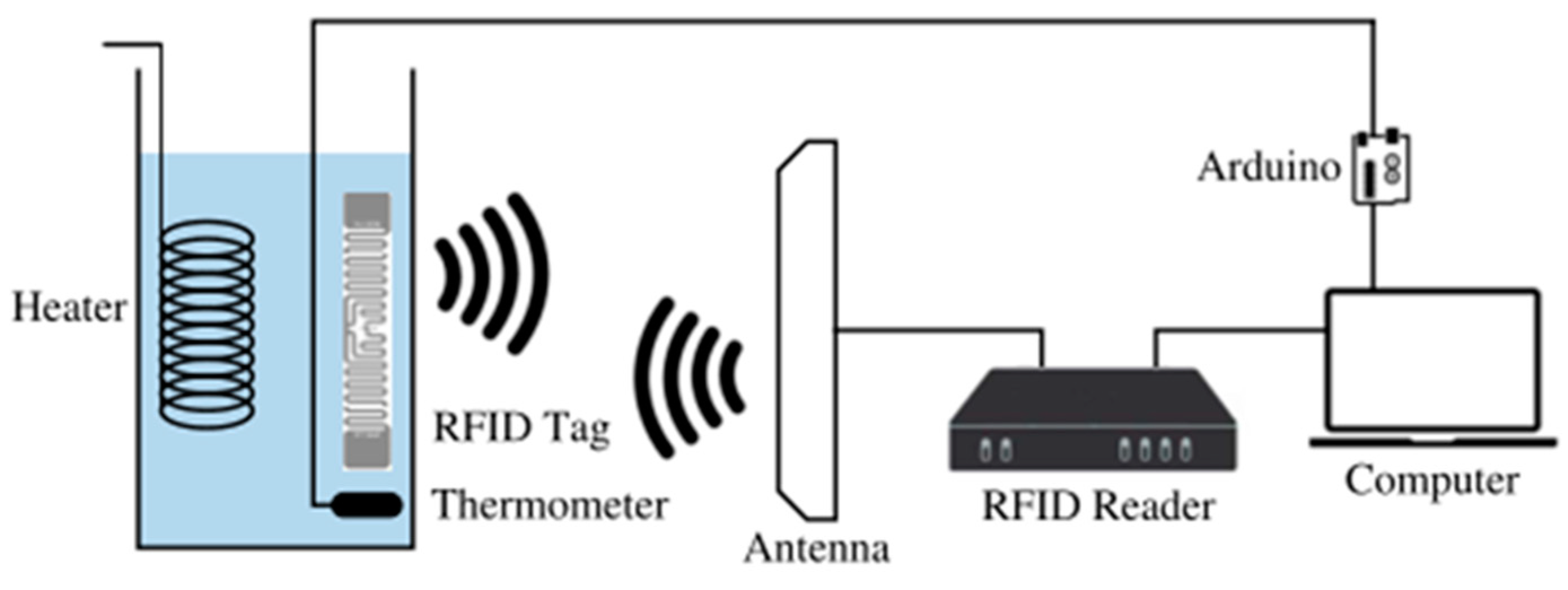

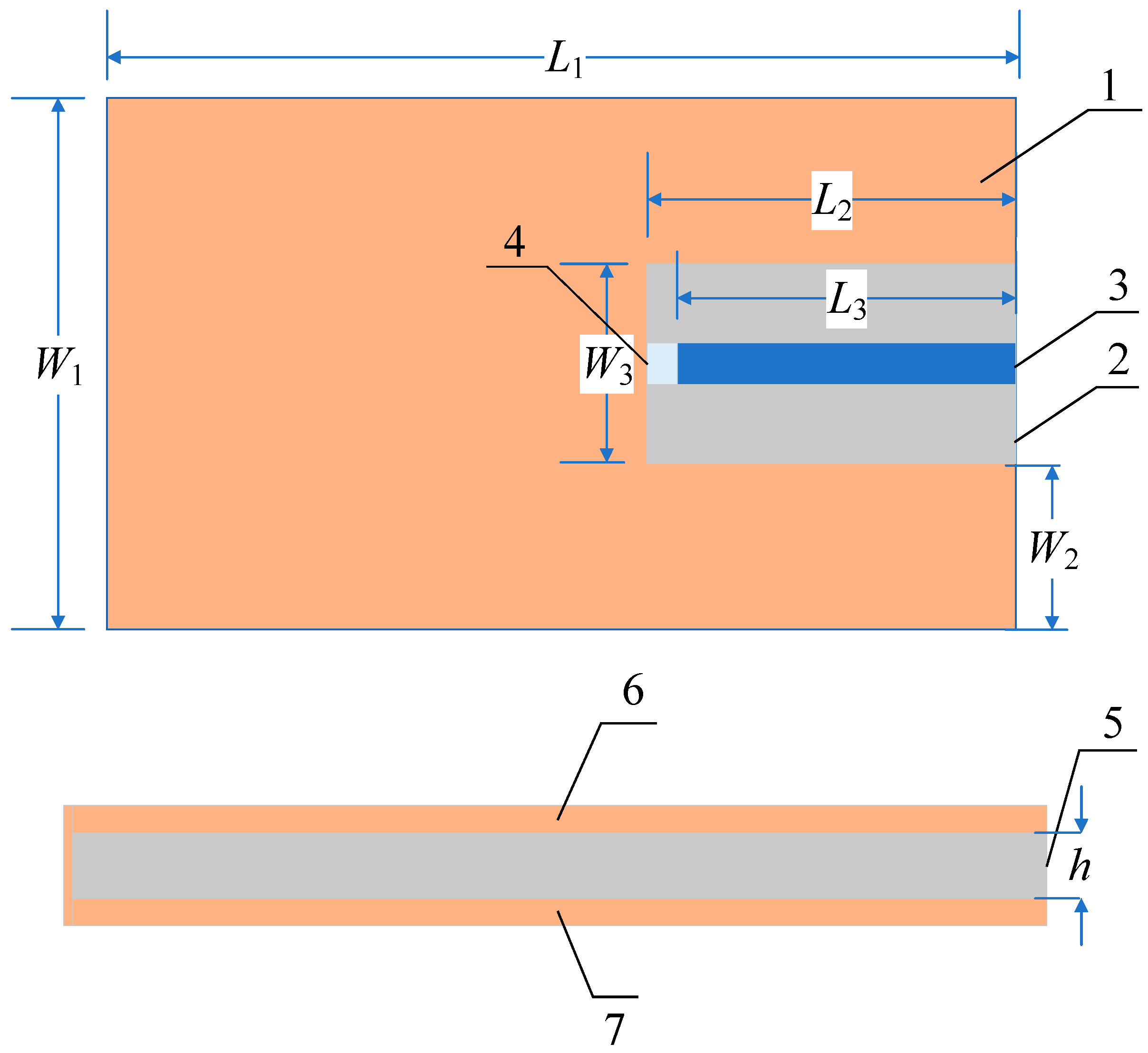
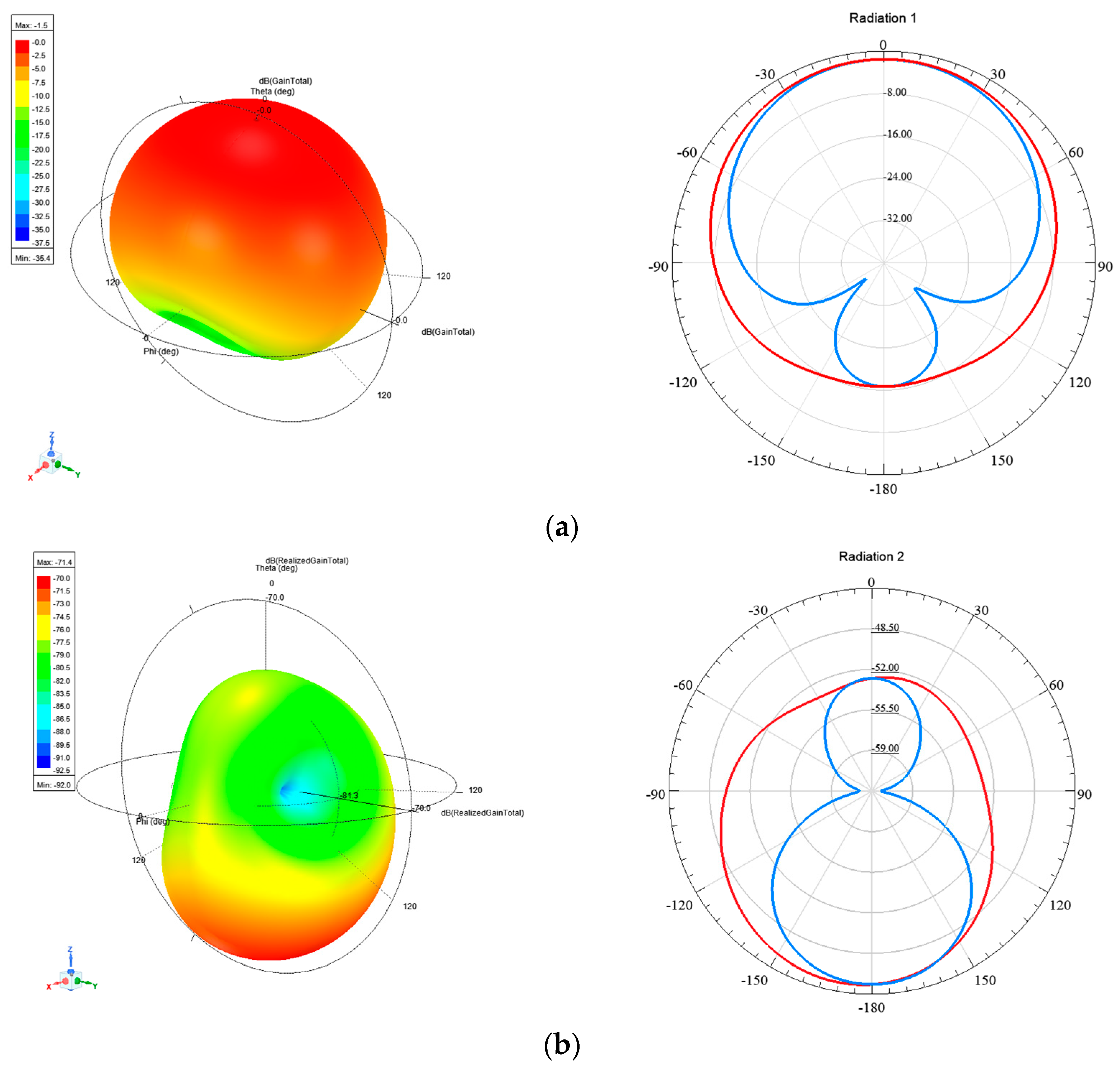



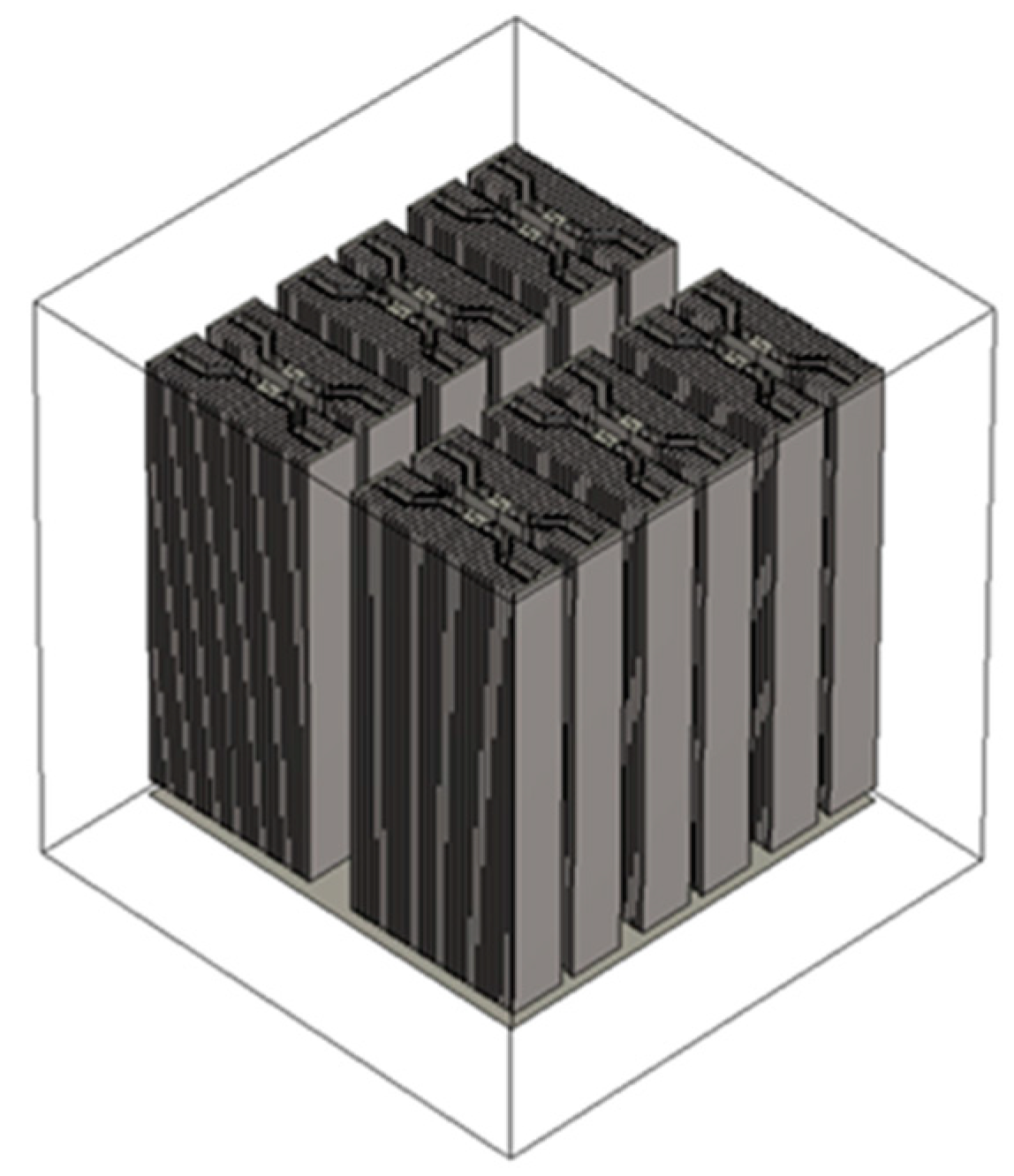

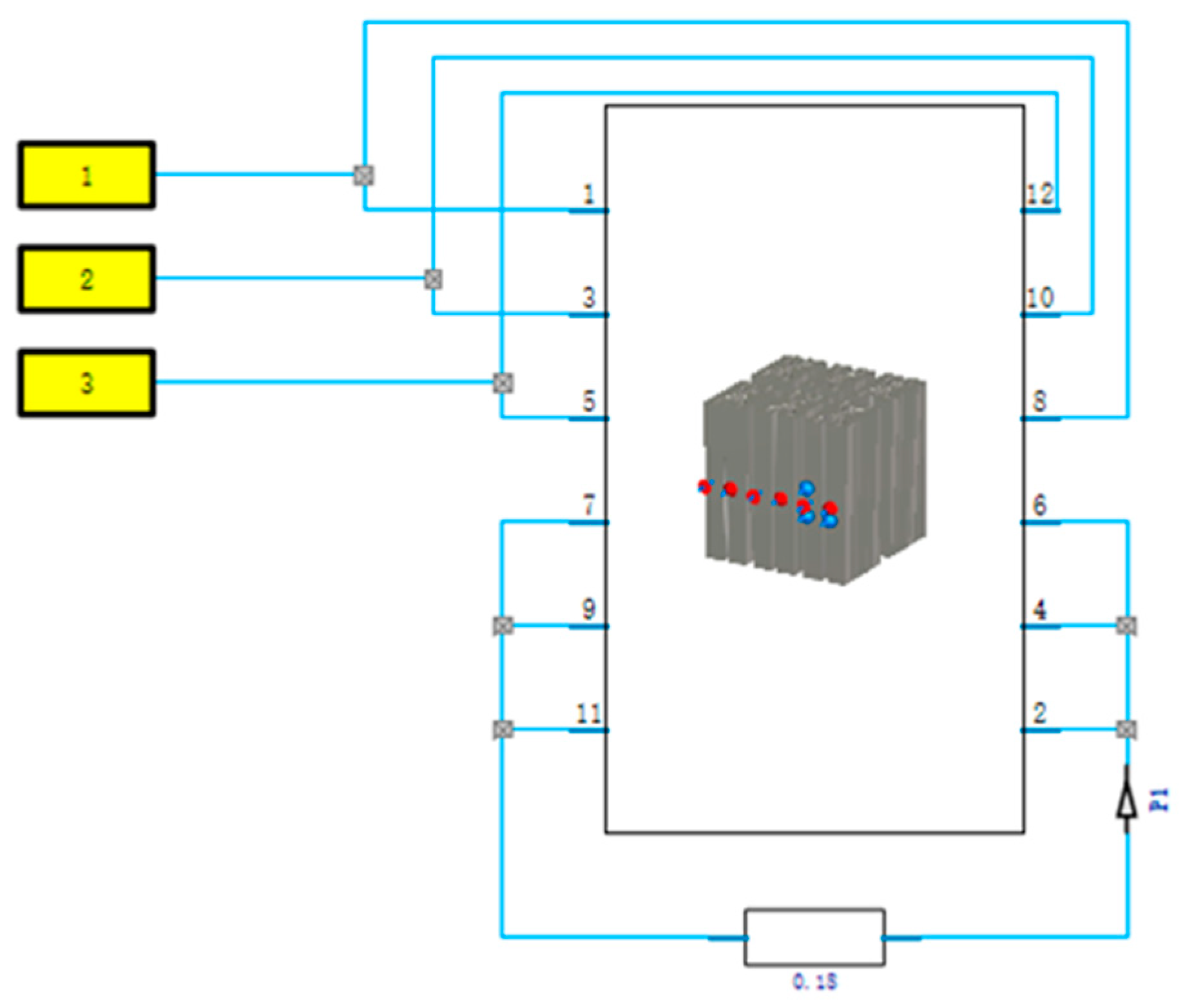

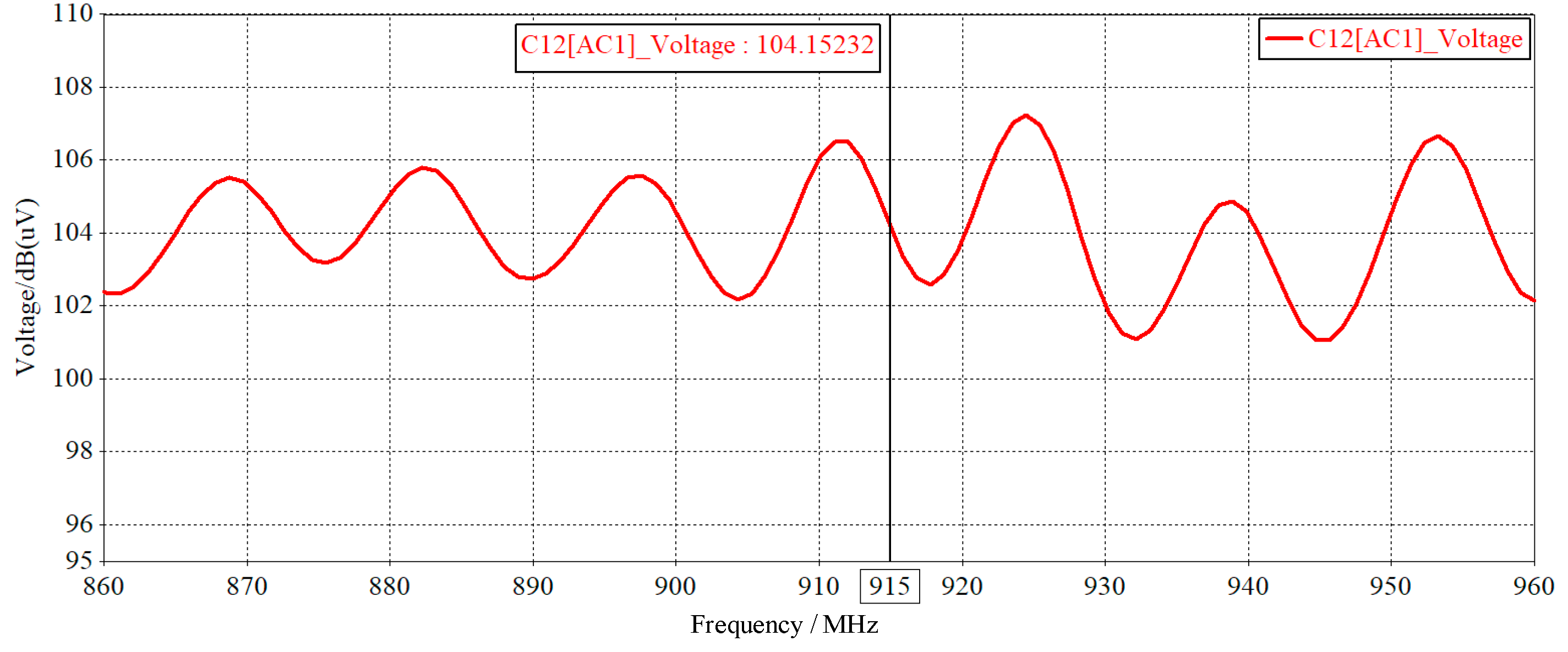
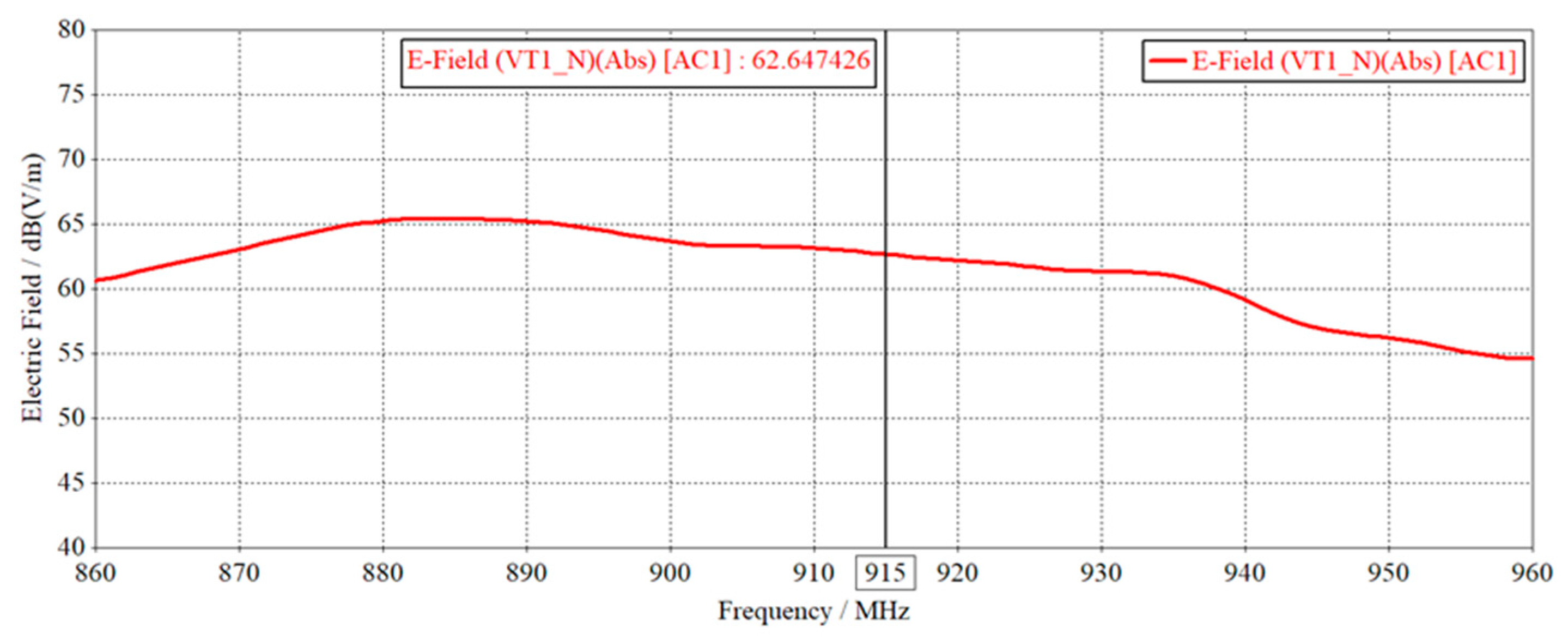
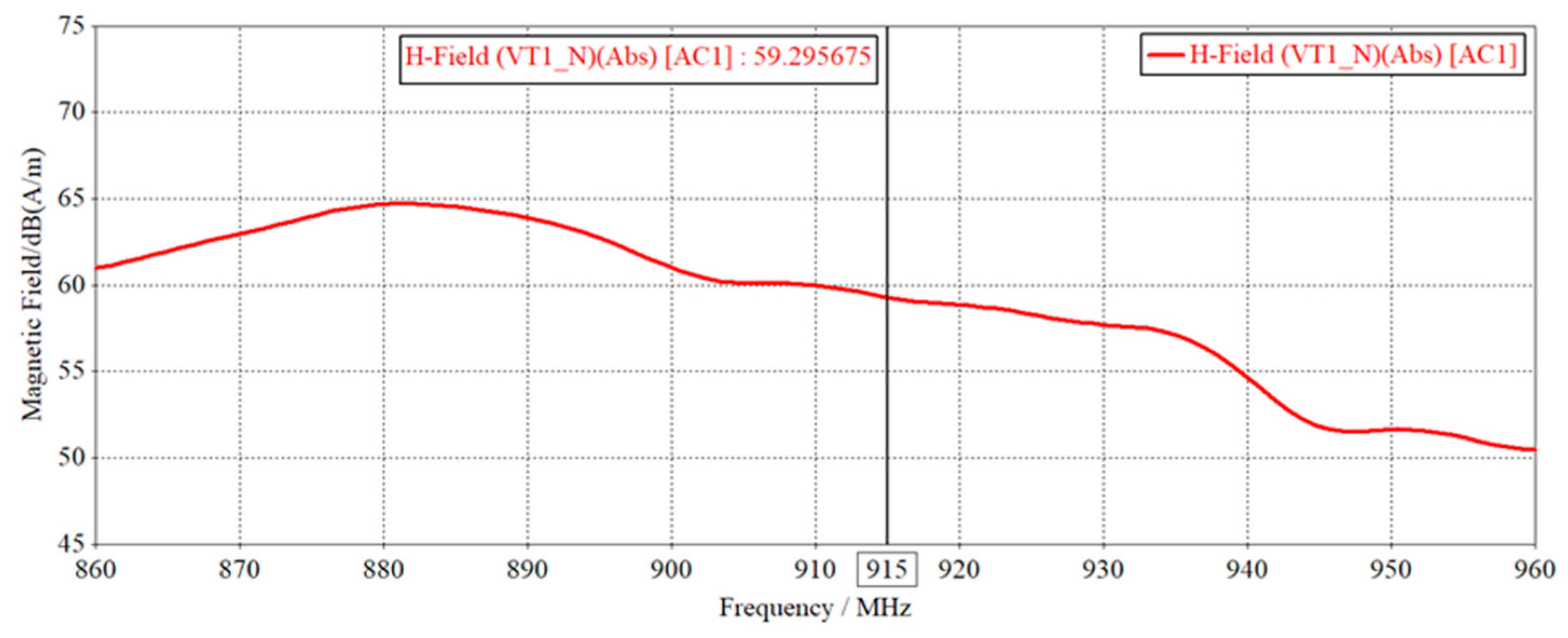
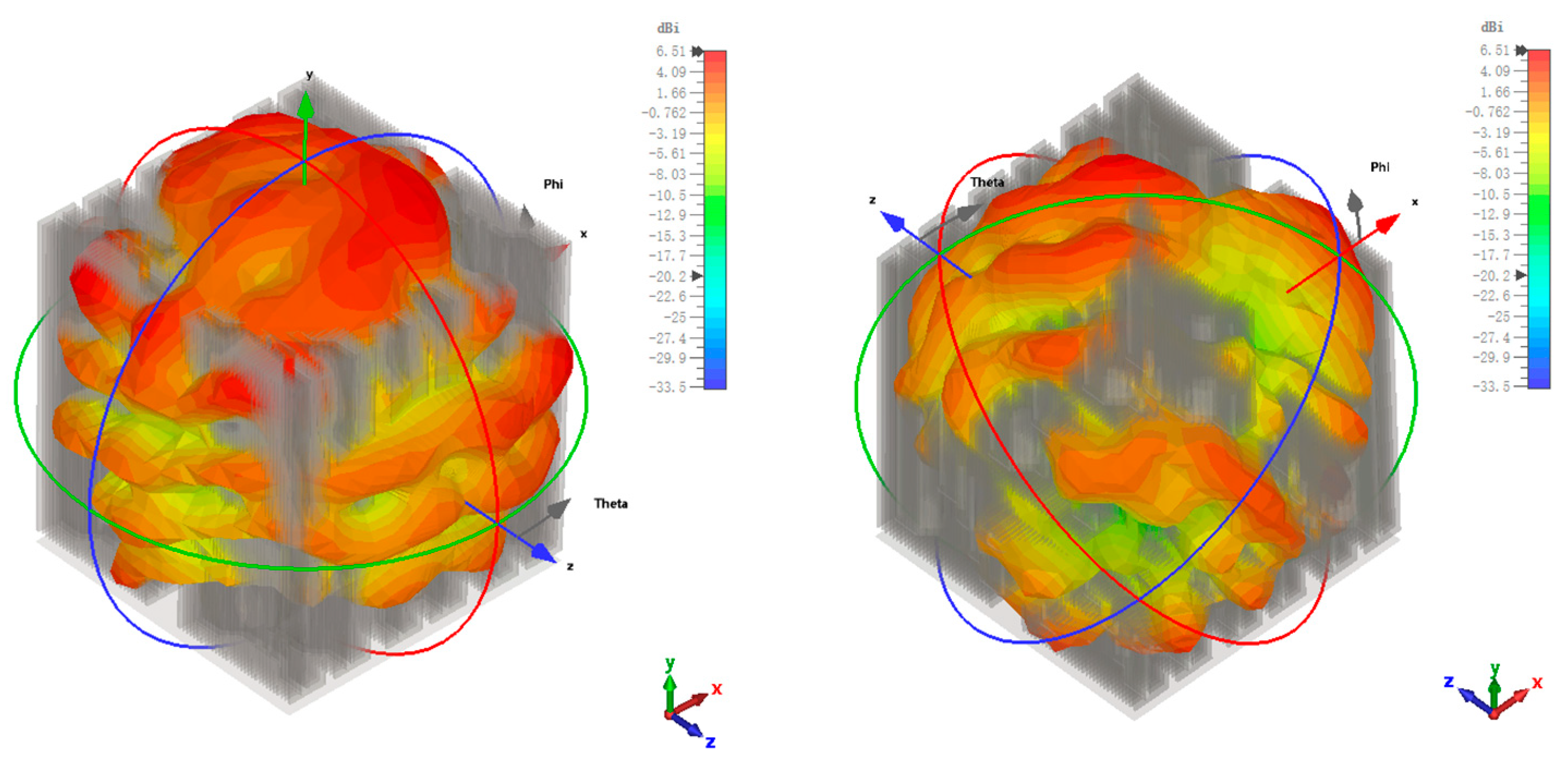
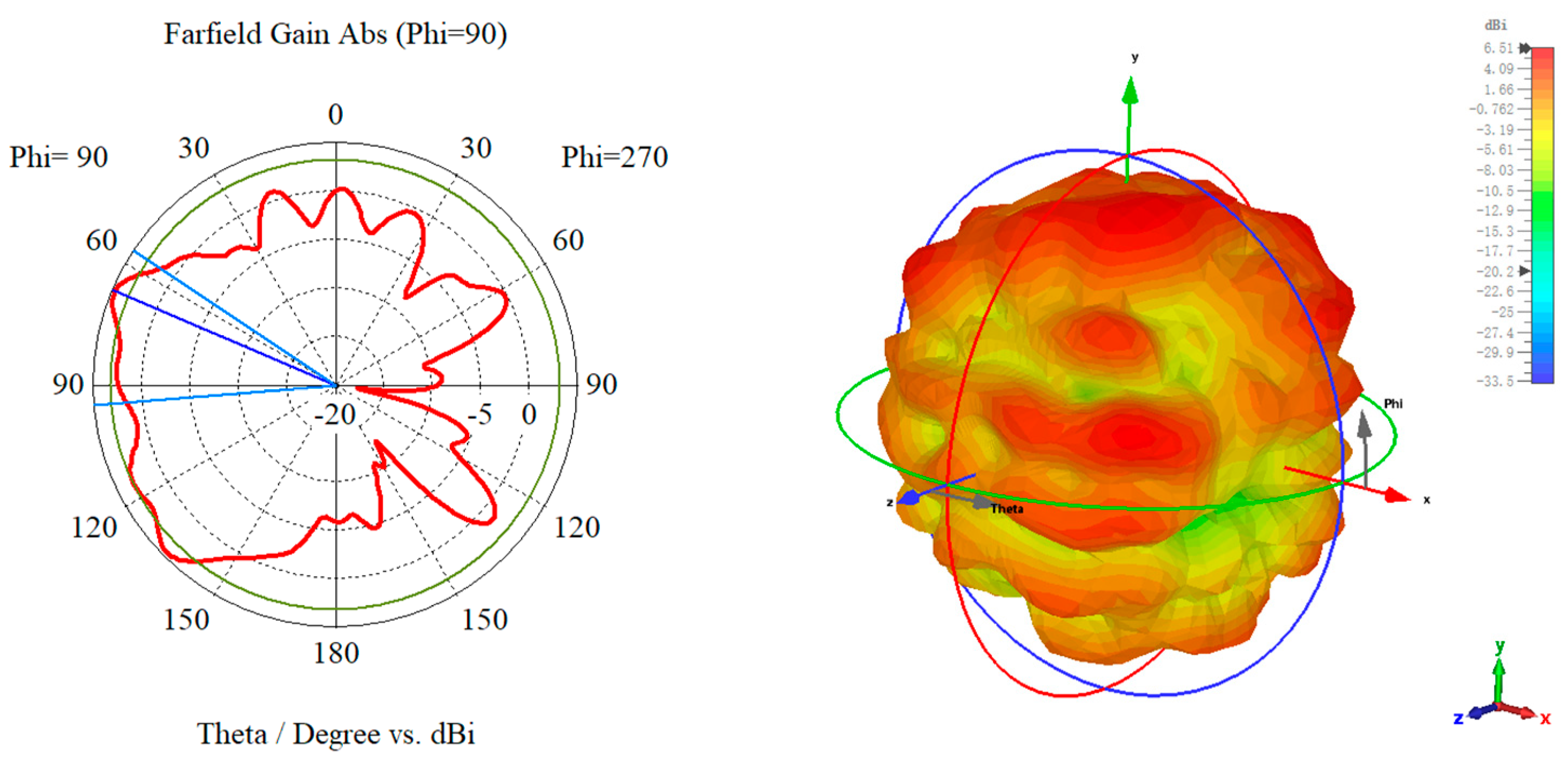
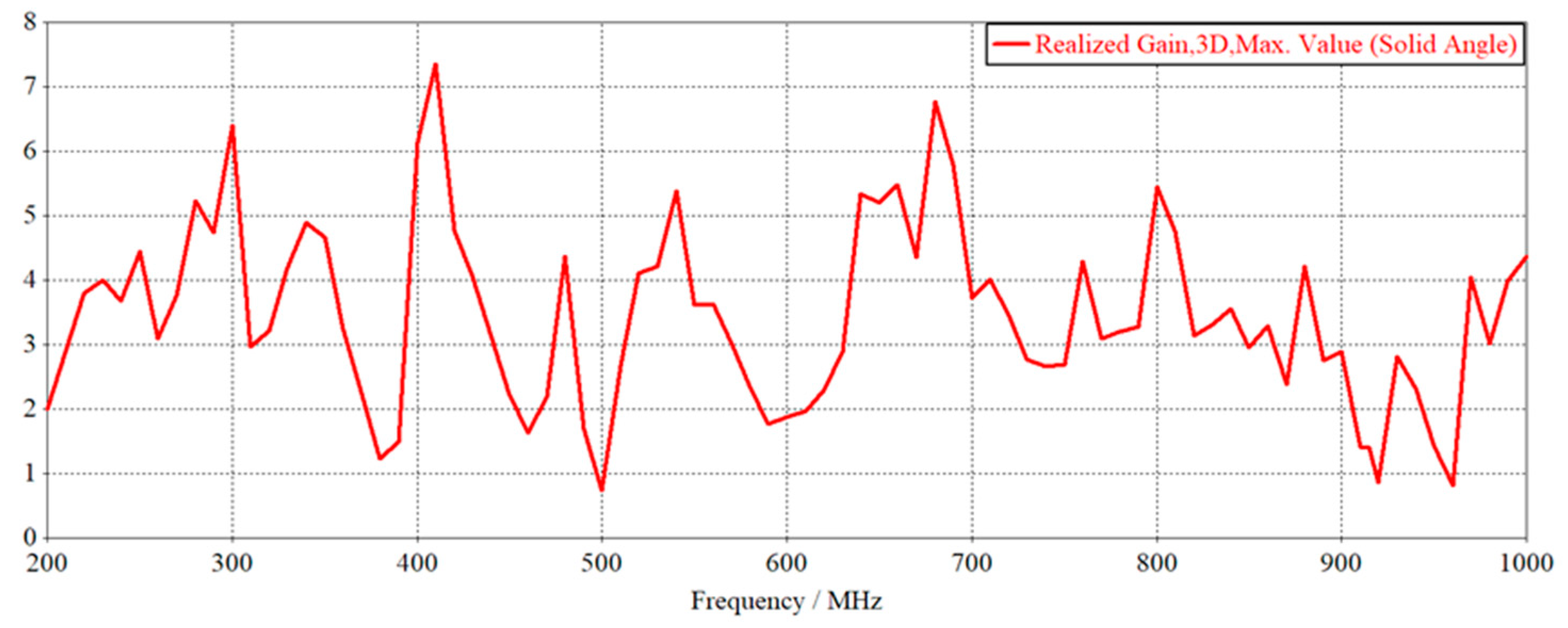

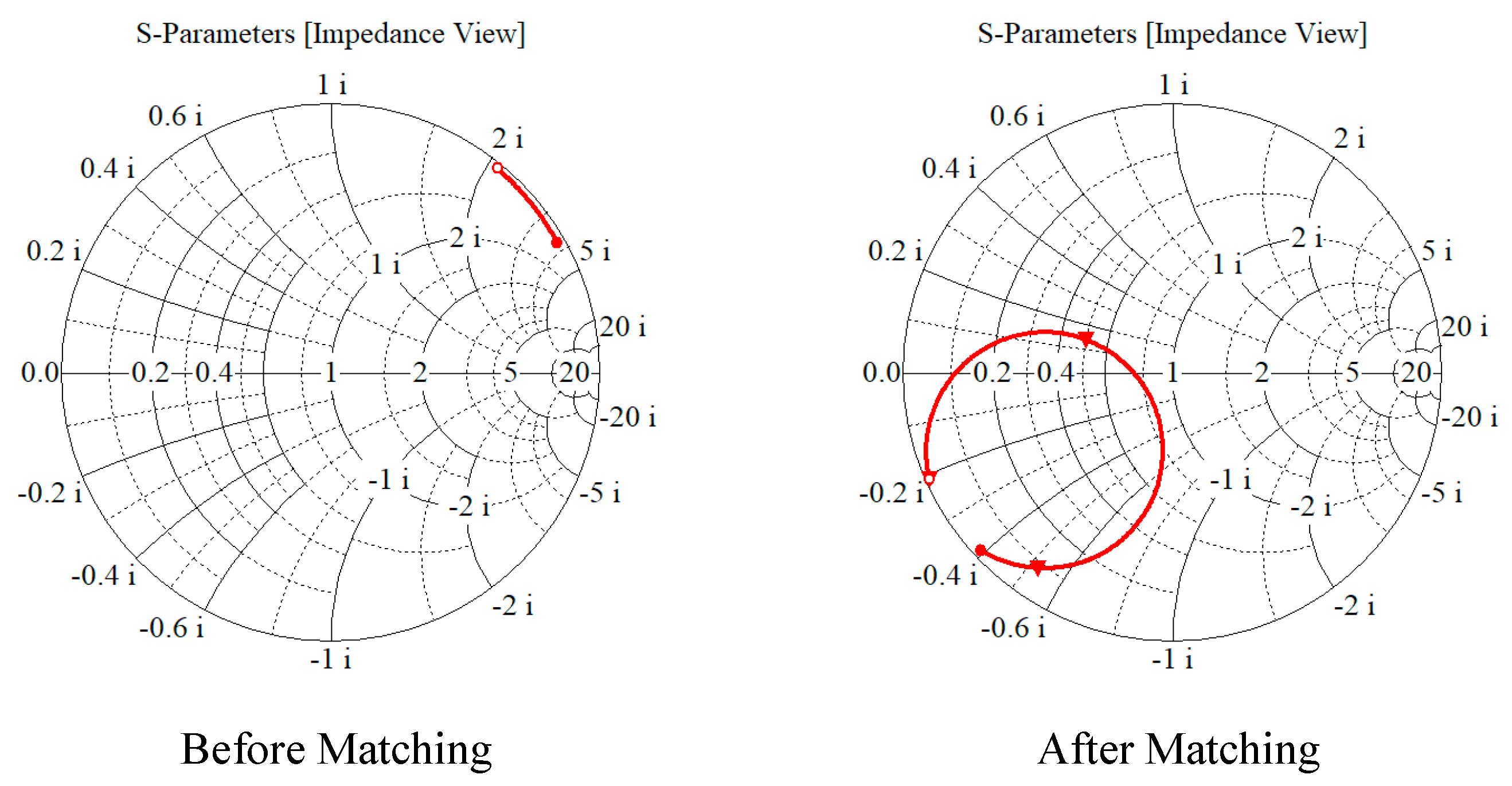
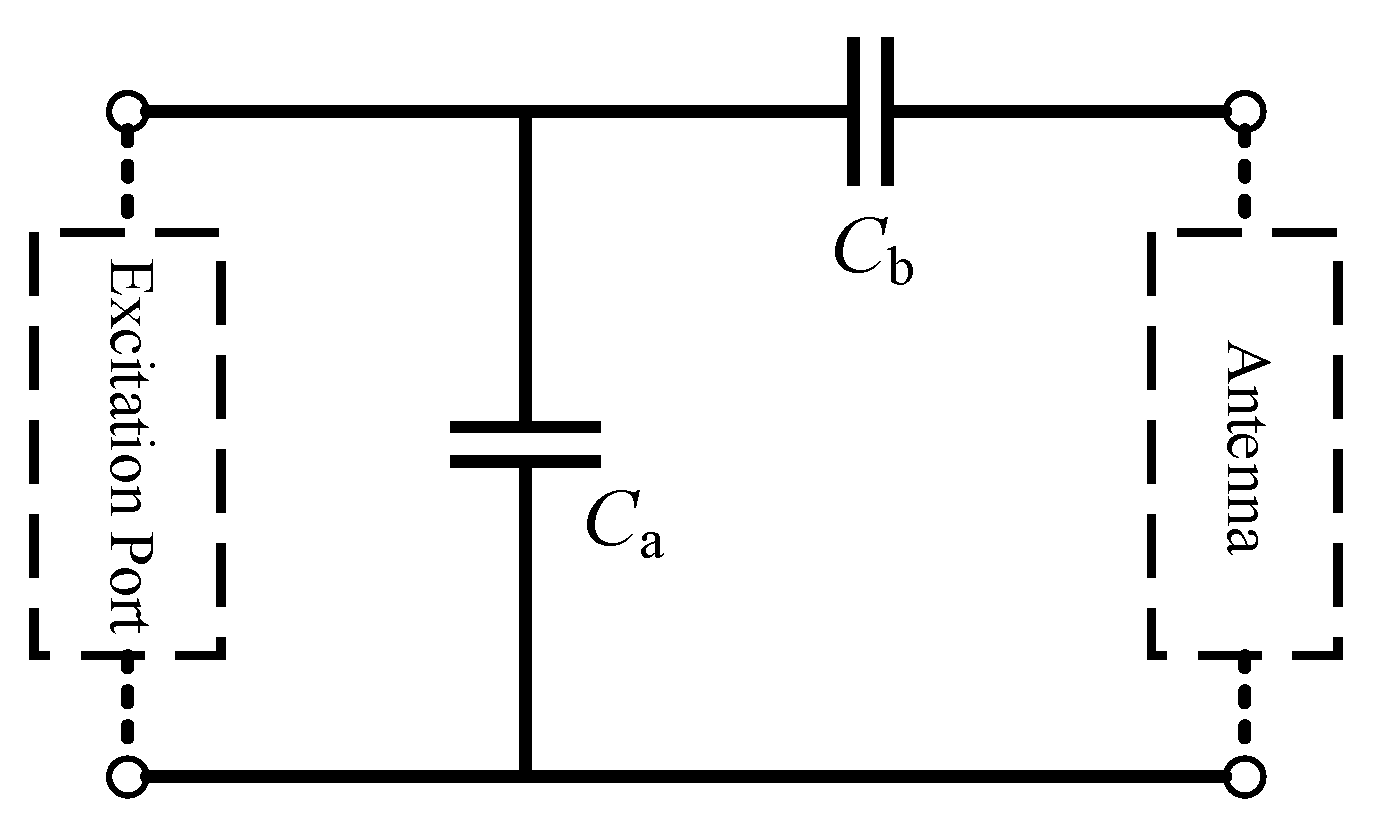



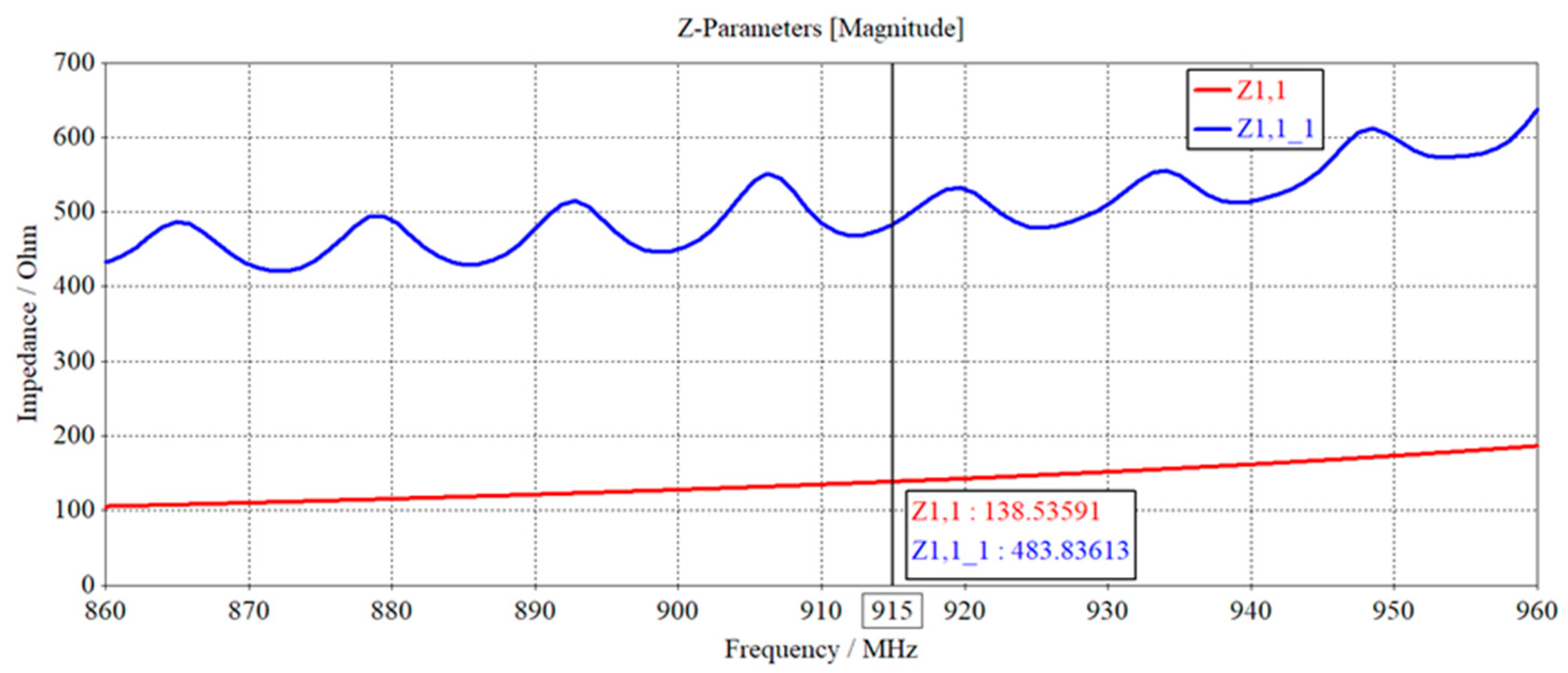

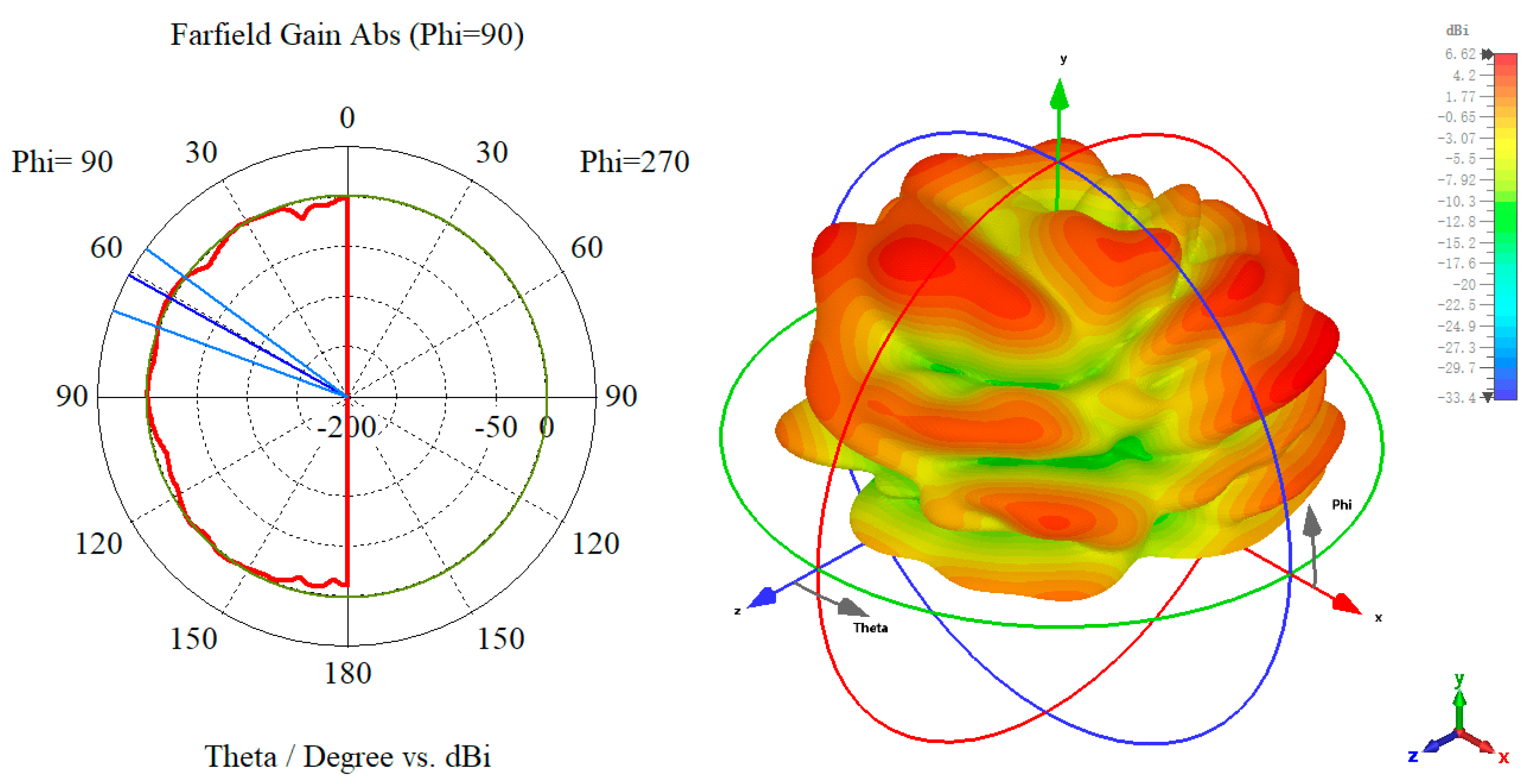
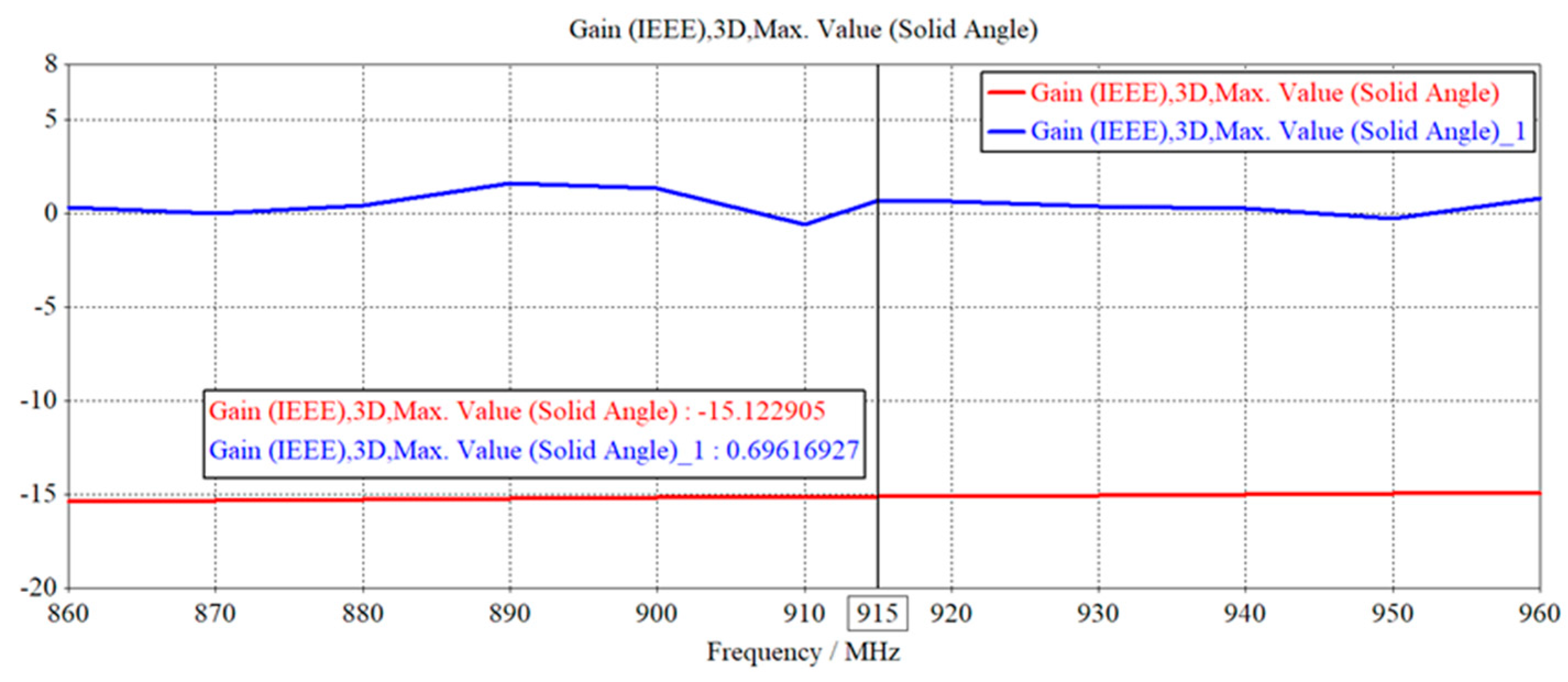
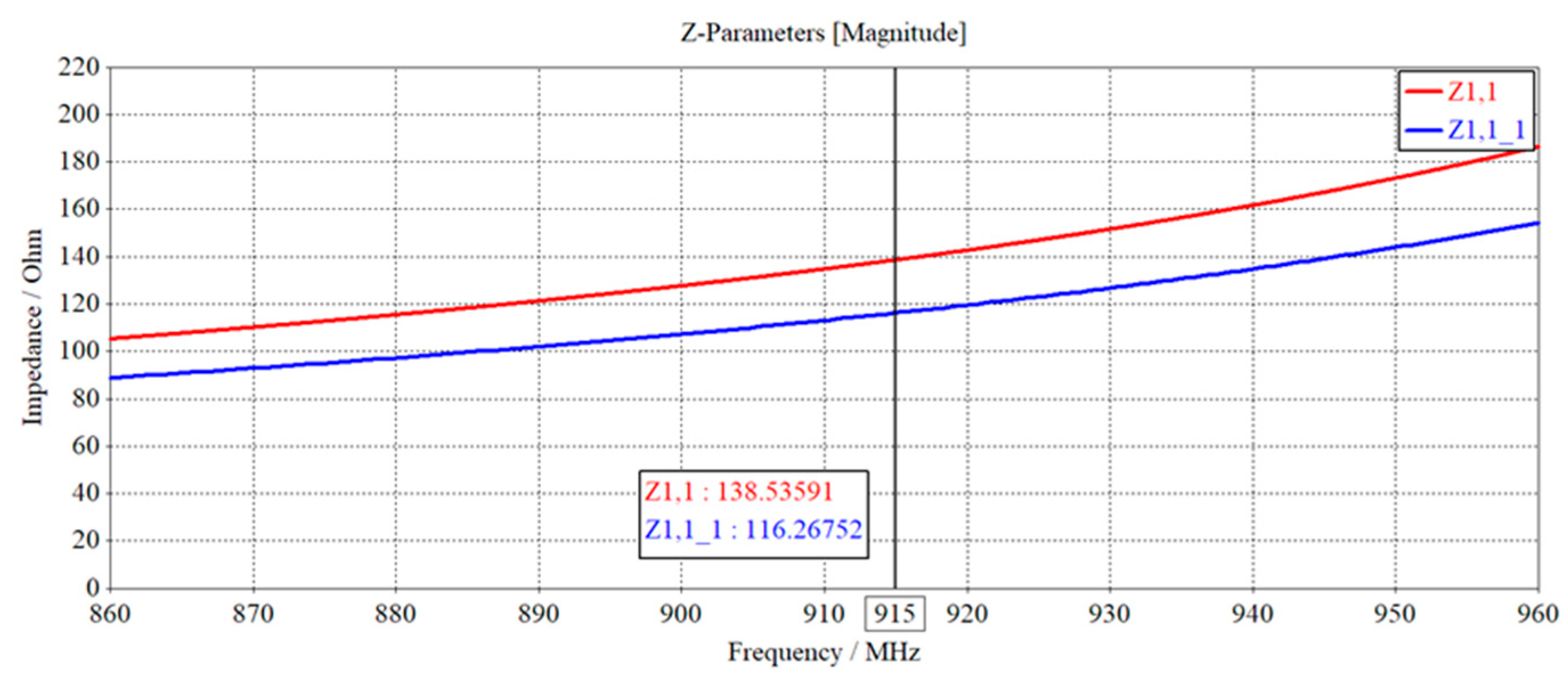
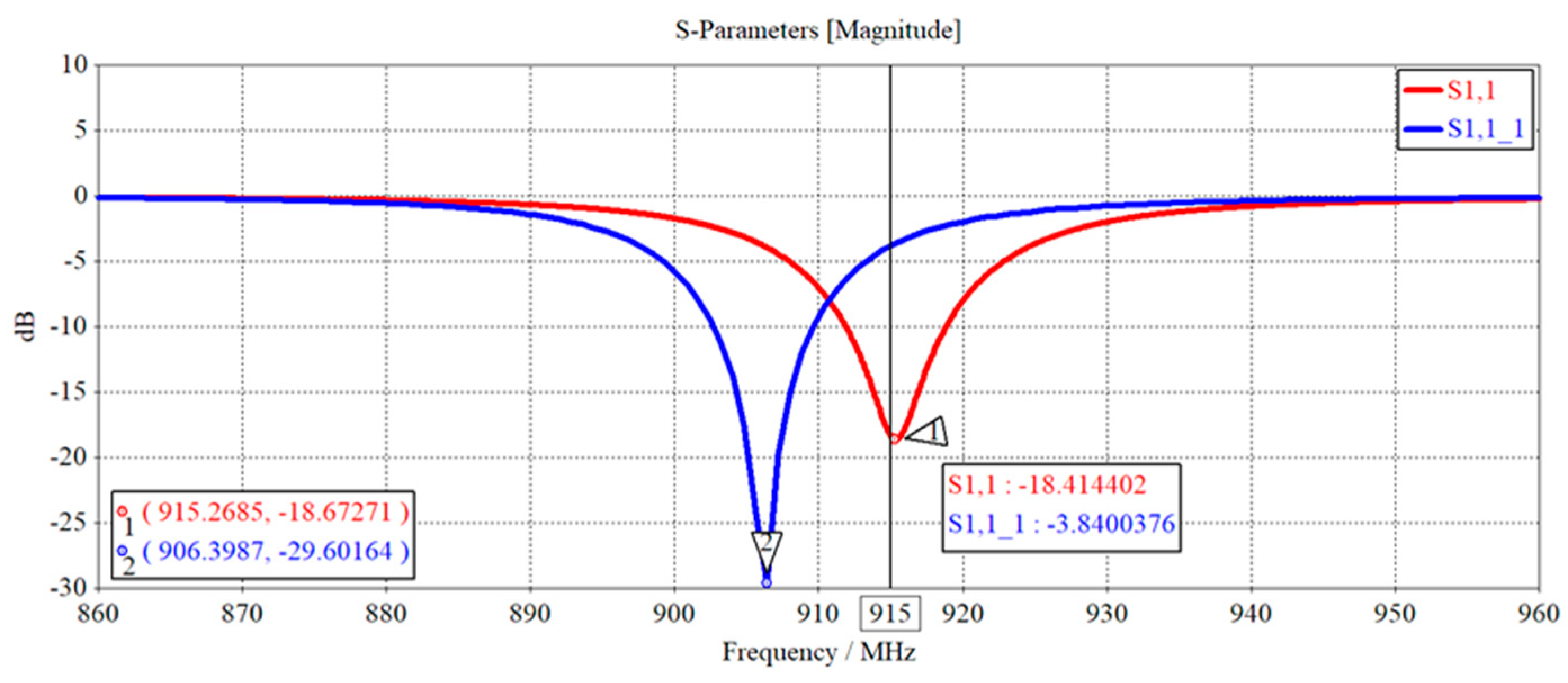
Disclaimer/Publisher’s Note: The statements, opinions and data contained in all publications are solely those of the individual author(s) and contributor(s) and not of MDPI and/or the editor(s). MDPI and/or the editor(s) disclaim responsibility for any injury to people or property resulting from any ideas, methods, instructions or products referred to in the content. |
© 2023 by the authors. Licensee MDPI, Basel, Switzerland. This article is an open access article distributed under the terms and conditions of the Creative Commons Attribution (CC BY) license (https://creativecommons.org/licenses/by/4.0/).
Share and Cite
Liang, J.; Zhou, Z.; Xiao, Z.; Liu, H.; Lu, Z.; Su, L.; Guo, W.; Deng, X. Analysis of Electromagnetic Interference for Anti-Medal UHF RFID Temperature Tag in High Power Electronic Equipment. Electronics 2023, 12, 3577. https://doi.org/10.3390/electronics12173577
Liang J, Zhou Z, Xiao Z, Liu H, Lu Z, Su L, Guo W, Deng X. Analysis of Electromagnetic Interference for Anti-Medal UHF RFID Temperature Tag in High Power Electronic Equipment. Electronics. 2023; 12(17):3577. https://doi.org/10.3390/electronics12173577
Chicago/Turabian StyleLiang, Jian, Zhuomin Zhou, Zhenfeng Xiao, Haotian Liu, Zhiqiang Lu, Li Su, Wei Guo, and Xiangtian Deng. 2023. "Analysis of Electromagnetic Interference for Anti-Medal UHF RFID Temperature Tag in High Power Electronic Equipment" Electronics 12, no. 17: 3577. https://doi.org/10.3390/electronics12173577



